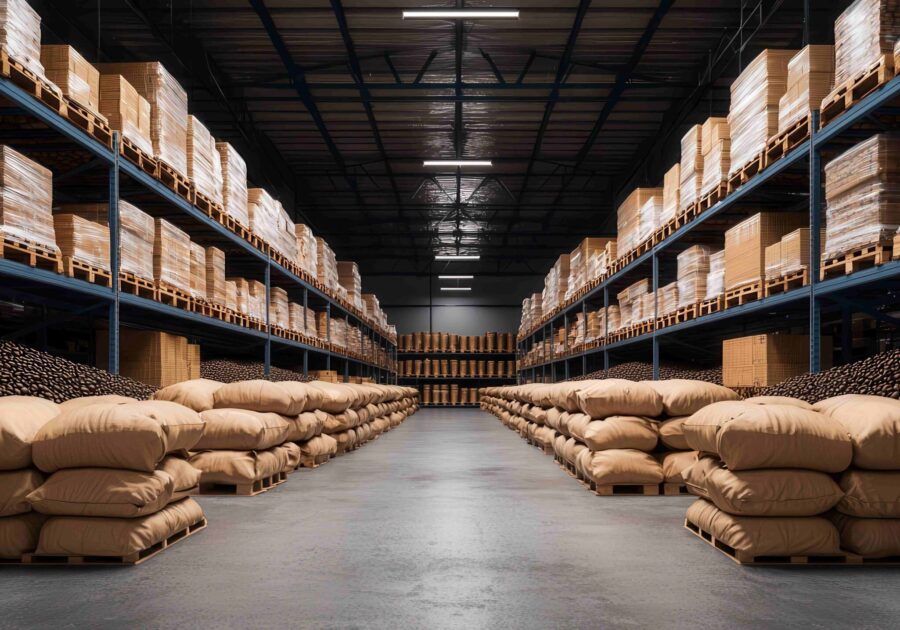The Role of Cold Chain Logistics in Preserving Beverage Quality

Image courtesy of Monster Ztudio-stock.adobe.com Background courtesy of Kanin-stock.adobe.co
While the cold chain can effectively prevent spoilage and preserve quality, given current technology, it faces several challenges to F&B preservation. By Patrick Hannon.
The food supply chain includes several steps, typically starting with a farm and ending with the consumer. Between the creation of a food product and its consumption, there are several stops, including processing, manufacturing, transportation, delivery and storage. At each point, the quality and safety of the food must be examined, and spoiled foods removed from circulation. The systems that keep food fresh during this process are referred to as the ‘cold chain’. Although the cold chain can efficiently prevent spoilage and preserve quality, especially with current technology, it faces several challenges to food and beverage preservation.
Preventing Spoilage
When food is perishable or requires a certain temperature to maintain quality and food safety, it must be refrigerated or frozen – from manufacturing to consumer – to avoid spoilage. This requires use of the cold chain. The cold chain is a network of systems that are designed to get a perishable product from its origin to its final destination, with a minimum of food spoilage. Unfortunately, experts estimate that as much as 620 million tonnes of food products are wasted each year due to failures in the cold chain. Although coffee and tea can be sold as shelf-stable products, even they often require cold chain solutions to prevent transportation conditions from affecting their quality.
Preserving Quality and Freshness
Although people may worry more about spoilage of dairy products, medications, and other goods as a concern of the cold chain, quality and freshness of all perishable goods are important aspects. Ideally, coffee and tea should be stored in containers that can be kept cool and dry, away from heat sources or cold drafts. Dry beans or leaves stored outside of these conditions may wilt or lose flavour as a result. Pre-made beverages must be kept at certain temperatures, especially if they are not processed into shelf-stable bottles or cans. Transportation of these shelf-stable goods may require cold chain fulfillment to preserve quality and freshness.
Challenges to the Cold Chain
Despite the existence of technology and systems designed to maintain quality and safety of perishable goods during transport, the cold chain faces numerous challenges to these goals. Common concerns include:
- Long delays at customs, which can tax cold storage equipment.
- Congestion at the delivery area, which can compromise fresh goods.
- Failures of equipment, which can cause perishable goods to spoil.
- Outdated transportation equipment that cannot track temperatures during transit.
The primary concern of the supply chain for coffee and tea is the safety and quality of the transport. Any transfer in the chain that allows the goods to fall outside of acceptable conditions can lower the quality of the product or even spoil it. As such, every attempt to fix potential problems should aim for holistic solutions that address the needs of the entire cold chain.
Potential Solutions to Cold Supply Chain Problems
As with other aspects of transportation and logistics as an industry, the solution to cold chain concerns often lies with technology. Innovative solutions to the challenges of the
cold chain include:
- Automation of order processing and picking, to minimise human error and ensure efficient loading.
- Internet of Things equipment to track temperature and humidity.
- Blockchain to provide a reliable, tamper-proof source of data about the progression of any coffee or tea product.
- Proper training in the storage and handling of cold chain goods.
- Integrated networks that incorporate transportation and distribution, to strengthen each link of the cold chain.
The best way to minimise spoilage and pre serve quality of tea and coffee is to ensure that every step of the cold chain utilises technology to maintain proper conditions. A comprehensive cold chain solution prevents waste and ensures the freshness of each product.
Maintaining the cold chain is critical to preventing food spoilage and preserving the freshness of coffee and tea. By understanding the common problems and solutions to cold chain concerns, industry professionals can identify ways to ensure that coffee and tea products maintain the highest quality.
Patrick Hannon is a business development manager at Green Rabbit, a cold chain logistics provider. He specialises in driving growth and strategic partnerships. Hannon is a seasoned professional in the cold chain logistics industry.

